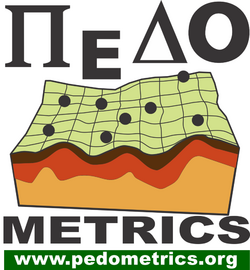Earth:Pedometrics
Pedometrics is the application of mathematical and statistical methods for the study of the distribution and genesis of soils.[1] Pedometrics is a portmanteau of the Greek roots pedos (soil) and metron (measurement). Measurement in this case is restricted to mathematical and statistical methods as it relates to pedology, the branch of soil science that studies soil in its natural setting.
Pedometrics addresses soil related problems when there is uncertainty due to deterministic or stochastic variation, vagueness and lack of knowledge of soil properties and processes. It relies upon mathematical, statistical, and numerical methods and includes numerical approaches to classification to deal with a supposed deterministic variation. Simulation models incorporate uncertainty by adopting chaos theory, statistical distribution, or fuzzy logic.
Pedometrics addresses pedology from the perspective of emerging scientific fields such as wavelets analysis, fuzzy set theory and data mining in soil data modelling applications. The advance of pedometrics is also linked to improvements in remote and close-range sensing.[2]

See also
References
- ↑ Heuvelink, Gerard (December 2003). "The Definition of Pedometrics" (PDF). Pedometron (International Working Group on Pedometrics - Provisional Commission on Pedometrics of the International Union of Soil Sciences) (15). http://www.pedometrics.org/pedometron/pedometron15.pdf. Retrieved 2006-11-01.
- ↑ Peter A., Burrough; Johan Bouma; Scott R. Yates (1994). "The state of the art in pedometrics" (PDF). Geoderma (Elsevier Science B. V., Amsterdam) 62: 311–326. doi:10.1016/0016-7061(94)90043-4. http://www.ars.usda.gov/SP2UserFiles/Place/53102000/pdf_pubs/P1277.pdf. Retrieved 2006-11-01.
External links

